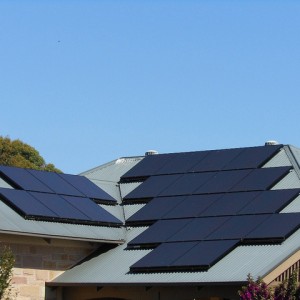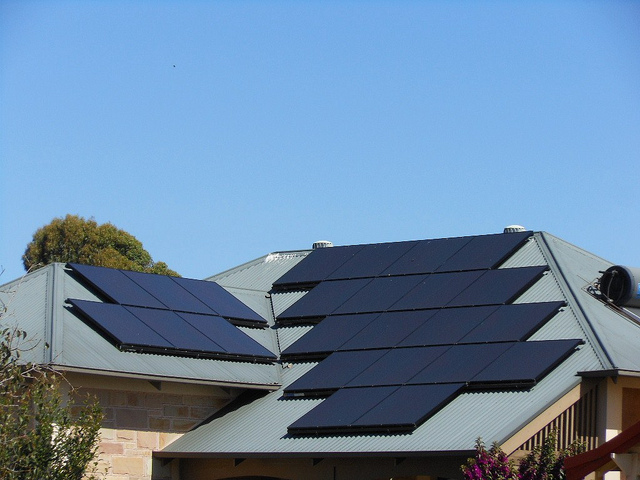From 1 July 2017, more than 130,000 Victorian solar households will benefit from the state government’s unprecedented move to steeply increase solar feed-in tariff for the year 2017/18.
Households will receive a new mandatory minimum solar feed-in rate of 11.3c/kWh for energy exported back to the grid, an increase from the 5c/kWh offered the previous year.
The hefty increase which was recently announced by the Essential Services Commission follows a big upsurge in wholesale prices, and the Victorian Labor government’s decision to incorporate network benefits, an implicit carbon price as well as environmental benefits in the tariff.
Why the increase?
The last few years have recorded an overarching trend with most states reducing their solar feed-in tariffs and/or eliminating mandatory minimum rate all together.
In recent months, wholesale market prices have sharply risen, thanks to speculations that marred the closure of the Hazelwood brown coal generator and eventual confirmation of its termination which is scheduled for next month.
Wholesale price calculation is based on predicted average pool prices of $77.82/MWh compared to last year’s, in an additional to 3.5c/kWh for climate, network and other benefits.
Even though, there’s an outcry that the ACIL Allen’s wholesale price formulae could be selling Australian solar households short.
Greg Barber of Greens MLC refered to the weekly Know Your NEM column by analyst David Leitch, which places projected pool prices in Victoria at $99/MWh for the period.
“The regulator is undercooking the wholesale electricity price estimate, just like they did last year,” Barber stated.
“If they looked at baseload futures in the real world, instead of hokey modelling, solar homes and businesses would be getting an extra two and a half cents per kilowatt-hour.”
Regardless of the shortfall, the proposed tariff is now far higher those of other states. This is majorly attributed to the inclusion of various factors, despite the ESC being accused of ignoring the full environmental and network benefits of the State’s over 1GW of installed rooftop solar.
Notably, the NSW and Queensland regulators haven’t implemented any minimum rate for years now; instead, they have allowed electricity retailers in their markets to compete for solar customers using voluntary prices on an open market, and only ‘benchmark’ recommendations as guidance. Recently South Australia abolished its mandatory minimum (the RFiT) too.
Alongside the 7.78c/kW, there’s an additional premium for solar (as it’s generated during the day), including evaded loss factors along transmission lines, which pushing the overall price to 8.7c/kWh.
As if that isn’t enough, there’s another 2.5c/kWh benefit calculated using the “avoided cost of carbon”. The Victorian government also wanted to include estimates of avoided environmental costs like air pollution but the ESC claim it couldn’t generate more meaningful data.
“We remain of the view, therefore, that the Commission is not able to determine the avoided human health costs attributable to a reduction in air pollution caused by small renewable energy generation,” the ESC said.
The ESC has been mandated to set different tariffs based on network benefits accruing to local grids. However, ESC has set a flat rate for the first 12 months to “allow sufficient time for consultation with energy retailers on the implementation of multi-rate feed-in tariffs in future years.”
The Energy, Environment and Climate Change Minister Lily D’Ambrosio stated that the new tariff meant Victorian households with solar PV systems would be moderately compensated for the electricity exported back into the grid.
“The former Coalition Government reduced the amount Victorian solar households received to 5 cents per kilowatt hour and voted against the bill to make this change,” she said in a statement.
“This is a great win for the 130,000 solar households all over Victoria, we promised a fairer system and that’s exactly what we have delivered.”
Shani Tager, the Solar Citizens senior campaigner says she hopes other state-based regulators would learn from Victoria’s move.
“We have been campaigning for a fairer price for solar following some outrageous efforts by the big power companies to rip Australian solar producers off, it is encouraging to see that the Victorian Government and the ESC have sensibly decided to recognise the contribution that solar producers make.
“Solar owners are up against hugely powerful companies and corporations who are trying to make obscene profits from the solar they produce – solar owners want, and deserve, a fair go for the contribution they make to powering Australia.”

